Last Chance to Catch NYC's Holiday Notalgia Train
We met the voices of the NYC subway on our nostalgia ride this weekend!


Boerum Hill is a mix of old and new in Brooklyn, with historic brownstones and row houses next to brand new and innovative apartments. Bound by Court Street to the west, 4th Avenue to the east, Schermerhorn Street to the north, and Baltic Street to the south, this tree-lined neighborhood is situated to the east of Cobble Hill just a block from the Barclays Center. Although not the most touristy since it is mostly residential, Boerum Hill offers some fascinating secrets, including a mosaic townhouse, strange signs, and remnants of a substantial Mohawk community. Here is our guide to the top 10 secrets of Boerum Hill!
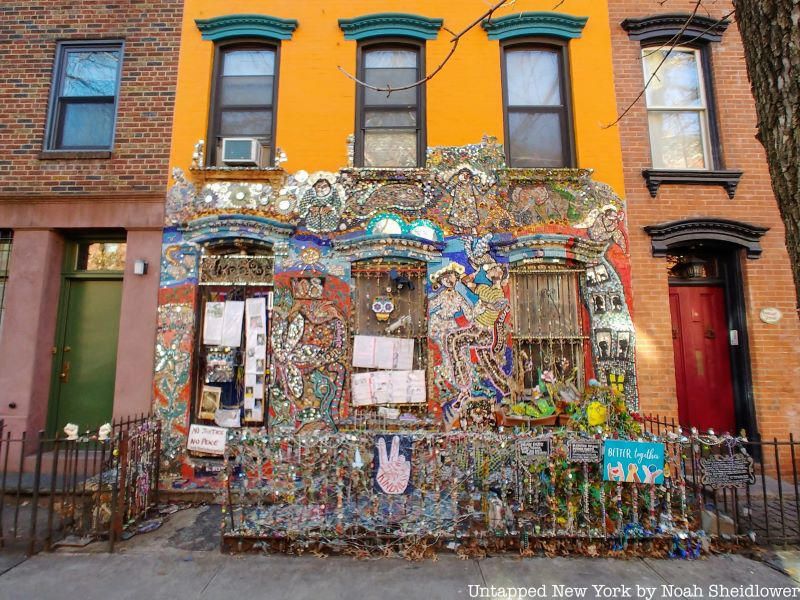
Located on 108 Wyckoff Street, the mosaic townhouse sticks out amid all the brownstones on the tree-lined street. Shards of crockery, colorful beads, discarded DVDs, pennies, buttons, pieces of marble, and more are stuck on the outside of this otherwise unassuming house. On top of these decorations are political signs and papers, some reading “No Justice No Peace” with tributes to those who died from police violence, others about the Civil Rights Movement. All these combine to create a celebratory mosaic, much to the joy of neighborhood residents.
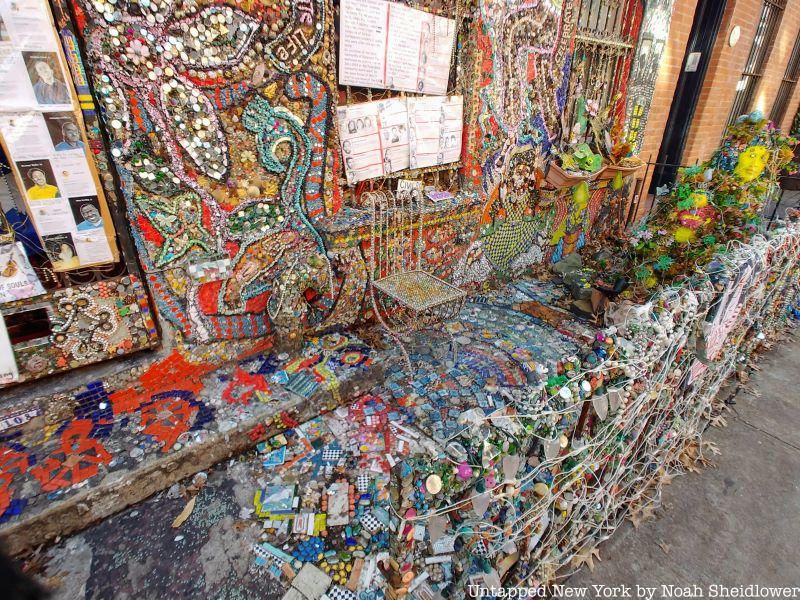
The mosaic house is the creation of Susan Gardner, who started pasting things on her house in 2001. According to a report in Brooklyn Bureau, Gardner, who was a teacher of art at Yeshiva University, started the mosaic with a small flower and has continued to build it out. Neighbors have also contributed by bringing buttons, broken plates, and other knick-knacks to the artist’s doorstep. The home now appears on walking tours and has allowed Gardner to hear stories of those who pass by and bring her meaningful items.
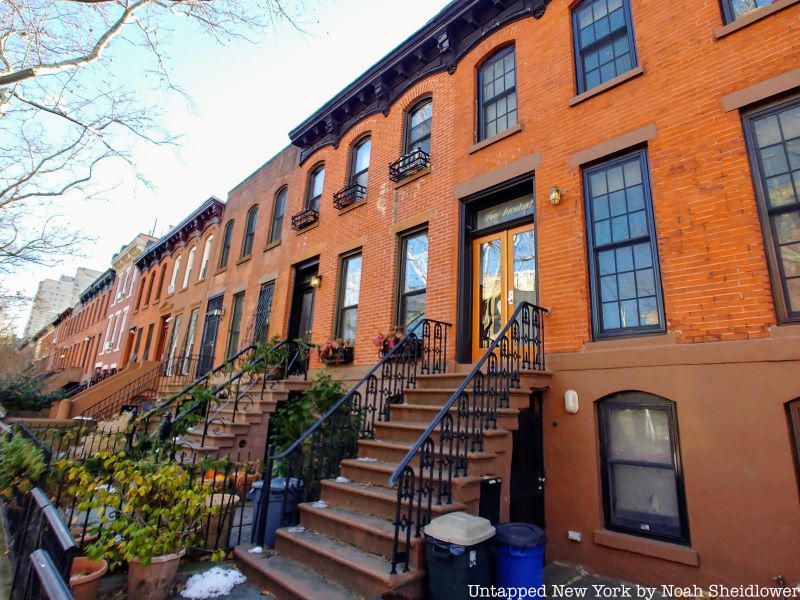
Despite what the name might suggest, Boerum Hill is not actually a hill, but is mostly flat. The neighborhood contains mostly three-story rowhouses built between 1840 and 1870. There are few changes in elevation throughout the small neighborhood, whose name was coined in 1964. The neighborhood is sometimes also referred to as “North Gowanus,” as some parts sit atop former marshes that bordered Gowanus Creek.
The “Boerum” part of the name derives from the Boerum family, who lived on a farm that occupied much of the land during Dutch settlement. The area was first settled by three Dutch settlers: Jan Eversen Bout, Jacob Stoffelson and Gerrit Wolfertsen van Couwenhoven. They helped start the village of Breuckelen, which would become “Brooklyn” over the years. The Boerums moved onto the land later, and a few members of the family played small roles in the American Revolution. William Boerum was a first lieutenant in the Brooklyn Light Horse Brigade, and Isaac Boerum and Hendrick Boerum were privates in the Brigade. John Boerum’s family owned at least two slaves, and it is possible that other Boerum homes also had slaves.
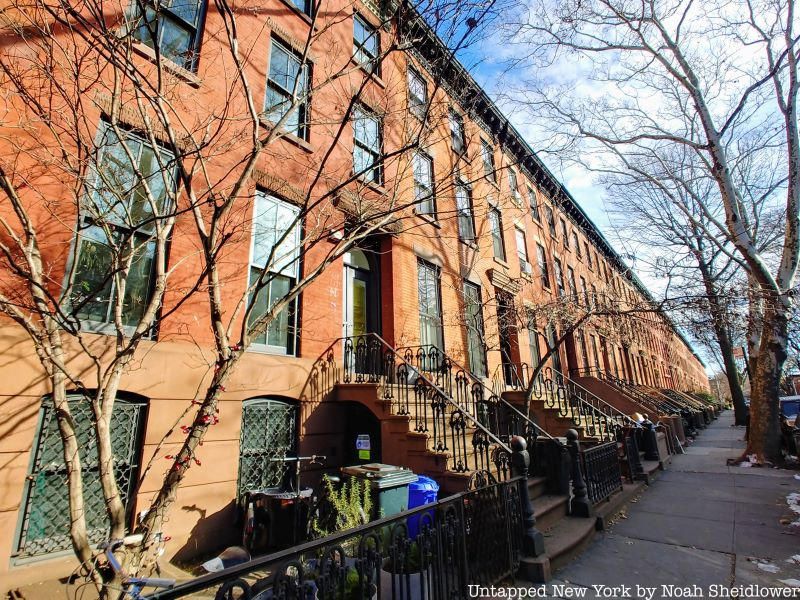
In 1916, Mohawk Native American ironworkers made their way to New York to work on the construction of the Hell Gate Bridge. By the 1930s, a Mohawk community of over 800 people lived in what was then known as North Gowanus, or Boerum Hill. The community earned the nickname “Downtown Kahnawake,” named for the Mohawk reservation near Montreal.
Although the community was originally just Mohawk workers who lived together in boarding houses, many brought their families to Boerum Hill during the Great Depression. The residents worked on some of the largest infrastructure projects of the time, including the Verrazano-Narrows Bridge. The Wigwam Bar at 75 Nevis Street was a Mohawk community hub in the neighborhood.
”It was a lot more than just a bar; it was like Grand Central for the Mohawk Indians who came here,” Verlain White, who worked at the Wigwam Bar, told the New York Times. ”People sometimes picked their mail up there. They got rides back to the reservation there. They found out about jobs there. They met there. I saw everybody.”
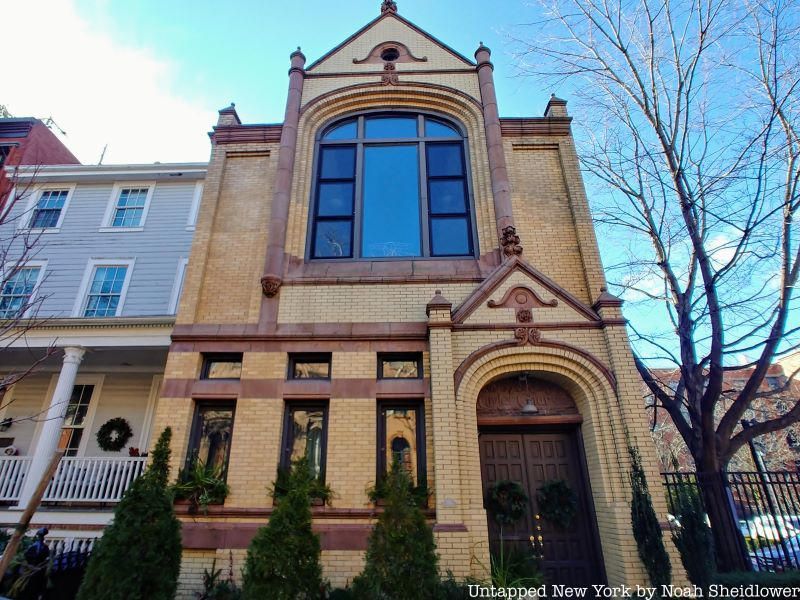
Cuyler Presbyterian Church, located at 360 Pacific Street, was the cornerstone of Boerum Hill’s Mohawk community. Workers often met at the church, which operated equally as a community center. Dr. David Munroe Corey, the pastor of the Cuyler Presbyterian Church, opened it to support community activities. Corey delivered services in the Mohawk language once a month and even translated a hymnal into Mohawk. According to Corey, it is likely the only Presbyterian church to have sponsored a yearly pow-wow, drawing Native populations throughout the city to watch and take part in traditional dances, prayers, and smoke signals.
The building on Pacific Street that housed the church now serves as apartments since the early 1980s. Edward Sargent designed the church, as well as served as the delineator for Frederick Law Olmsted in the designs for Central Park. The 1892 church features a gabled roof with terracotta copings. It is situated next to the parsonage, built in 1851 in the Greek Revival style.
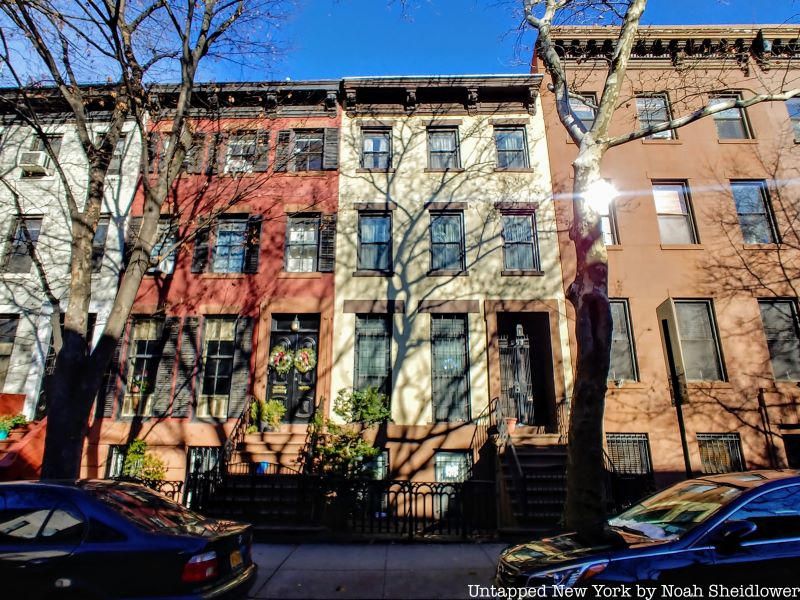
Jean-Michel Basquiat was born on December 22, 1960, in Park Slope to Gerard and Matilde Basquiat. His father was born in Haiti while his mother was born to Puerto Rican parents in Brooklyn. In 1966, he moved to East 35th street in East Flatbush, where he began studying and practicing art, attending the nearby Saint Ann’s School and drawing his favorite cartoons.
After his parents separated, he moved to Boerum Hill with his father and two siblings before moving to Puerto Rico three years later. He returned to Boerum Hill in 1976 and moved out in 1978 after creating the fictional character SAMO. Though little is known about Basquiat’s time in Boerum Hill, Nora Fitzpatrick and Gerard Basquiat are photographed with his two sisters in their Park Slope living room at 553 Pacific Street, even though he is absent.
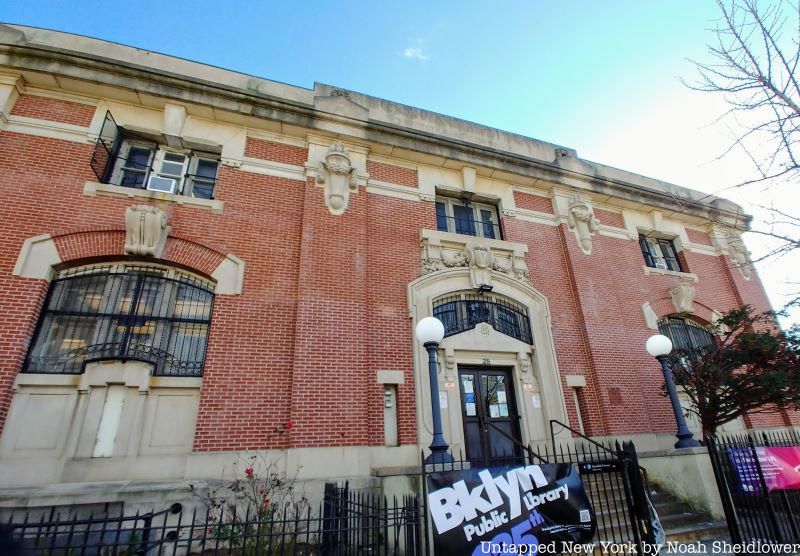
At the intersection of Pacific Street and 4th Avenue on the eastern border of Boerum Hill is Brooklyn’s oldest Carnegie Library. The Pacific Branch was the first Carnegie Library to open in Brooklyn on October 8, 1904. It was designed by architect Raymond F. Almirall, a Beaux-Arts architect who designed Staten Island’s Seaview Hospital and Fordham Hospital. The library was praised for its classical design, although it underwent renovations in 1914 due to the construction of the BMT subway.
There were 21 Carnegie Libraries built in Brooklyn and 67 citywide, altogether built using a grant for $5,202,261. Carnegie Libraries were constructed using money donated by philanthropist Andrew Carnegie, and there were 2,509 built worldwide between 1883 and 1929. The first Carnegie Library in New York City was built in Yorkville, Manhattan, in 1902.
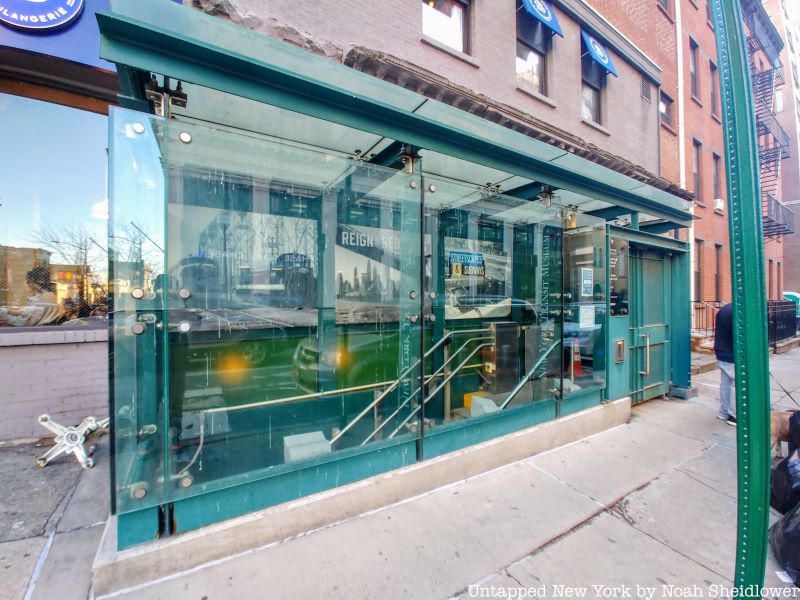
The New York Transit Museum, located on the northern border of Boerum Hill, tells the ever-evolving story of mass transportation in New York City through artifacts and rotating exhibitions. The museum acquires historical items through purchases from auctions, public gift donations, internal transfers from other MTA departments, and donations from other museums. Such items have included an 1831 New York and Harlem Railroad Ledger Book (the oldest item in the museum), archaic platforms including “no spitting” signs, and twenty vintage subway and elevated cars dating back to 1907.
In a new exhibit, the New York Transit Museum has featured sketches by local artists of MTA subway riders. Many artists sketch while commuting, passing the time and honing their skills. “Transit Sketches” features work by six artists — Ebony Bolt, Marvin Franklin, Naomi Grossman, Joseph Solman, Amy Tenenouser, and Hank Virgona — who spent years filling sketchbooks during train rides. Each sketch tells a story of someone on their way to work, traveling home with children, on their way to a museum, or lost in thought.
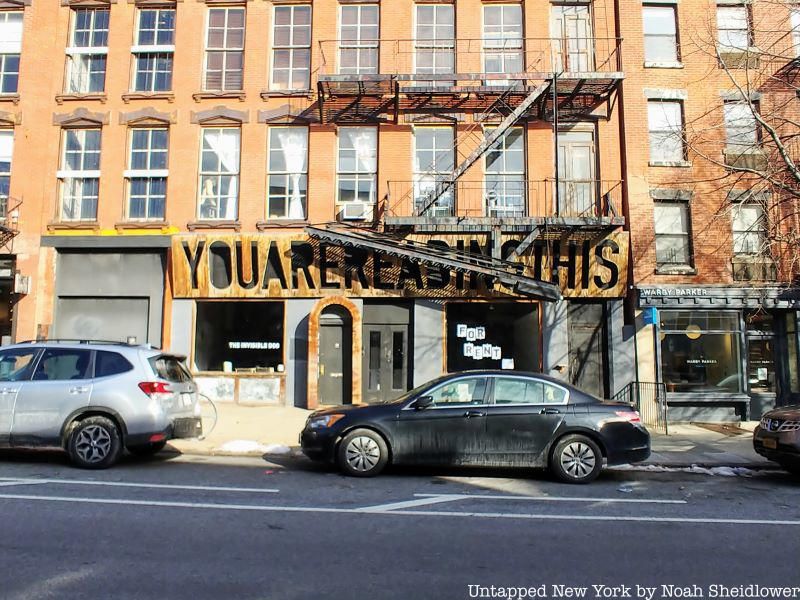
Along Bergen Street in Boerum Hill is a wooden sign that simply states, “YOU ARE READING THIS” in large black letters. Partially obscured by a fire escape, the humorous sign sits above the Invisible Dog Art Center at 51 Bergen Street, established by Lucien Zayan in 2009. The gallery is located in an old factory that produced the “invisible dog leash,” created by George Zorbas who already produced belts and jewelry in the space.
The creative sign sits above the art center’s entrance. The ground floor is used for exhibitions, performances, and public events featuring artists and curators from around the world, as well as a pop-up shop. The second and third floors are divided into over 30 artists’ studios. The center has previously hosted “performance dinners,” sound installations, and makers markets. This month, artist-in-residence Nicole Mannarino will continue research on her latest work DIVE, analyzing the potential of the collective in dance and performance.
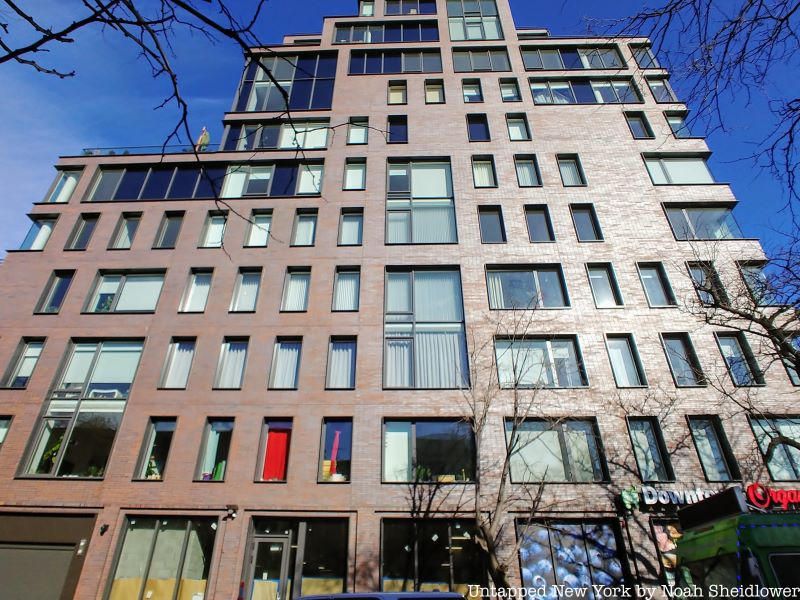
Boerum Hill is known for blending new and old, as seen by many 1800s rowhouses and brownstones next to modern highrises and experimental buildings. including 90 Wyckoff Street nestled on a tree-lined block. A number of buildings are not as outwardly striking but innovative nonetheless, including the “upside-down townhouse” at 139 Bond Street with a multi-windowed facade and a planted roof terrace. Jonathan Safran Foer, author of Extremely Loud & Incredibly Close, recently sold his historic brownstone at 374 Pacific Street for $10.4 million.
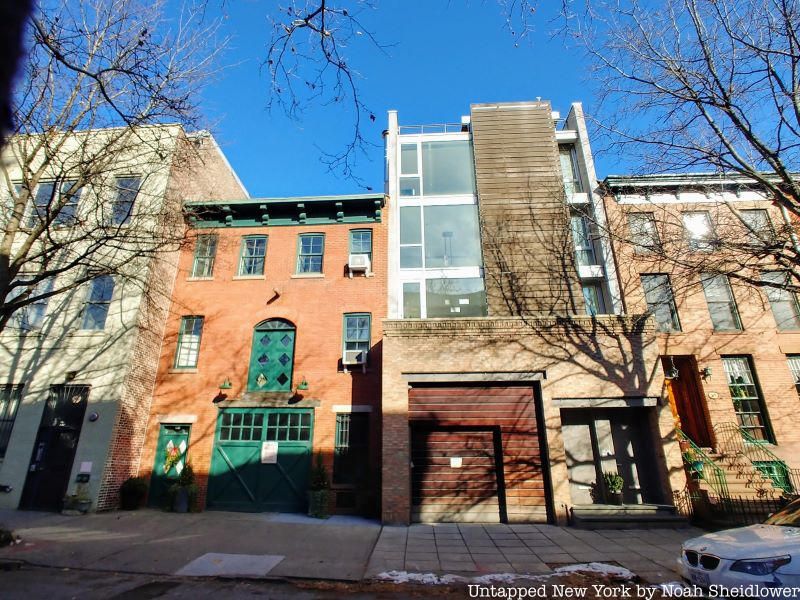
While the Boerum Hill Historic District is a city landmark, tall buildings have been built nearby, including the 14-story 211 Schermerhorn with floor-to-ceiling windows. 509 Pacific Street, known as the Hendrik, features 33 condominiums with custom-dyed polished concrete floors and paneled ash-white oak walls. Also of note is the Boerum at 265 State Street, a 19-story condo/hotel development.
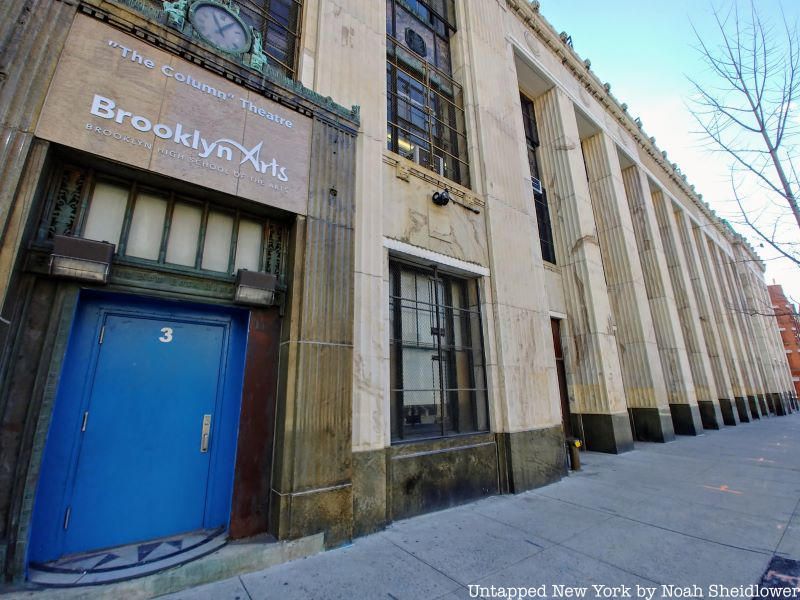
Brooklyn High School of the Arts in Boerum Hill is a public arts high school that functions as a pre-conservatory and pre-college. The first class graduated in 2004 and included hip-hop recording artist Jeannie Ortega. Majors at the school include fine art, dance, instrumental music, theater, and vocal music. The Preservation Arts program sets students up with local internships at arts organizations across the city. The school also has partnerships with the Metropolitan Opera House and invites famous guest speakers through the Brooklyn Arts Lecture Series.
Next, check out the Top 12 Secrets of Cobble Hill!
Subscribe to our newsletter